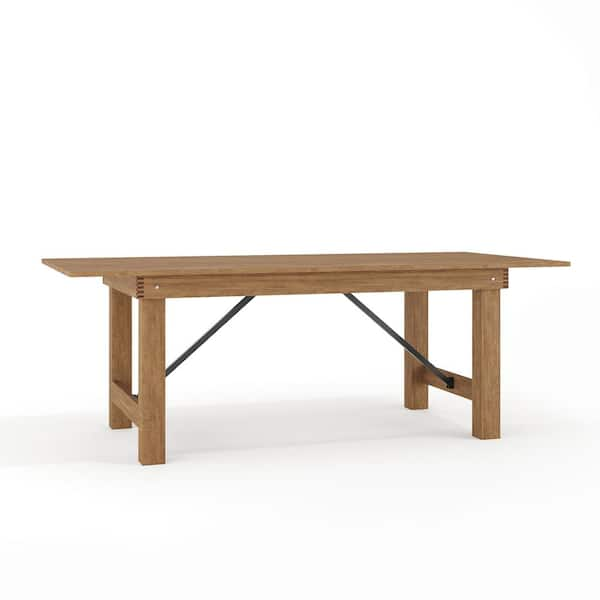Exploring the Different Kinds of Eating Table Legs Wood for Your Eating Space
The selection of dining table legs wood can exceptionally influence both the practical and aesthetic qualities of your eating room. Solid wood alternatives, such as oak and walnut, provide a classic look with unparalleled sturdiness, while engineered wood options use innovative layouts that imitate the splendor of all-natural grains.
Solid Timber Options

In addition, strong wood is renowned for its toughness and longevity. Unlike engineered products, strong timber is less prone to bending and damage with time when effectively kept. This makes it an excellent choice for family members or those that frequently organize gatherings. Each item of strong wood is one-of-a-kind, showcasing individual qualities that contribute to the charm and character of the table.
In addition, strong timber can be completed in many ways, ranging from all-natural oils to discolored coatings, permitting home owners to customize their furnishings to match their design. In summary, picking solid wood for dining table legs not just ensures structural honesty yet likewise enhances the aesthetic charm of the dining location, making it a rewarding investment for any type of home.
Engineered Wood Alternatives

Plywood, created from numerous layers of wood veneer, is stable and especially strong, making it an exceptional option for dining table legs. Its layered structure permits it to stand up to changes in humidity and temperature far better than traditional solid timber. MDF, on the other hand, supplies a smooth surface for paint or veneering, enabling designers to achieve a refined look while preserving architectural honesty.
Particleboard, often utilized in affordable alternatives, provides decent toughness and is light-weight, making it simpler to handle. It may not be as resilient as plywood or MDF. When choosing engineered wood alternatives, it is important to consider the designated use and desired visual. These materials not just enhance the performance of eating spaces yet additionally enable higher design versatility, making certain that conventional and contemporary designs can exist together sympathetically.
Reclaimed Timber Includes
Redeemed wood offers a special blend of sustainability and personality, making it an increasingly prominent selection for eating table legs. Sourced from old barns, manufacturing facilities, and various other structures, reclaimed wood embodies a background that new materials simply can not reproduce. Each piece lugs its very own tale, marked by distinct imperfections, knots, and differing grain patterns, which add to a table's one-of-a-kind aesthetic appeal.
In enhancement to its aesthetic charm, reclaimed wood is an eco-friendly option. By repurposing formerly utilized products, it reduces the demand for new lumber, hence assisting to conserve woodlands and decrease waste. This straightens with a growing customer choice for sustainable practices Learn More Here in furniture.
In addition, redeemed timber is typically extra resilient than freshly harvested wood as a result of its age. The all-natural drying out process that recovered wood goes through cause a denser and stronger material, making it much less vulnerable to warping and splitting. This improves the durability of dining tables, allowing them to stand up to the roughness of daily usage.
Softwood vs. Wood
When selecting dining table legs, comprehending the distinctions between softwood and hardwood is vital for attaining both aesthetic and practical objectives. They usually display an even more rustic look, making them appropriate for laid-back or country-style dining spaces.
On the other hand, woods, sourced from deciduous trees like maple, cherry, and oak, are renowned for their thickness, strength, and sturdiness. The complex grain patterns and abundant shades of hardwoods offer a advanced and classic allure, making hop over to here them ideal for formal eating settings. While woods tend to be more expensive and much heavier, their durability against wear and tear frequently validates the investment.
Ultimately, the option in between softwood and hardwood for dining table legs need to straighten with your style vision, use requirements, and budget plan, making sure that your dining area shows your personal design while continuing to be useful gradually.

Finishes and Treatments
The visual charm and durability of table legs can be substantially boosted through different surfaces and treatments. These processes not only shield the timber from damages yet also elevate its look, permitting it to match varied interior styles.
One content usual treatment is tarnishing, which passes through the wood and enhances its natural grain while including color. Spots offer a rich, stylish look, enabling homeowners to match their furnishings with existing design. On the other hand, clear surfaces such as polyurethane or varnish develop a protective layer without changing the wood's original hue, making sure durability versus deterioration.
Additionally, all-natural oils, like tung or linseed oil, nourish the wood and supply a refined luster, all while being green. These oils permit the surface to take a breath, protecting against wetness buildup and prospective warping.
For those looking for a rustic charm, weather-beaten or distressed finishes can be related to create an aged appearance, adding character to the piece. Eventually, the choice of treatments and finishes depends upon individual preference, wanted looks, and the details timber type, making it vital to consider these factors when choosing table legs for your space.
Verdict
Solid woods, engineered alternatives, and redeemed options each offer unique advantages, catering to various preferences and needs. Eventually, the selection of timber kind need to align with desired style, sturdiness, and environmental factors to consider, boosting the overall eating experience.
The choice of dining table legs wood can exceptionally impact both the visual and functional top qualities of your eating room - Dining Table Legs Wood. Solid timber options, such as oak and walnut, offer a timeless look with unequaled toughness, while crafted wood options provide ingenious styles that mimic the richness of all-natural grains. Strong wood offers a classic top quality that can raise the total design of a dining space. Each item of solid wood is unique, showcasing private characteristics that include to the appeal and character of the eating table
Moreover, recovered timber is often extra sturdy than freshly collected timber due to its age.